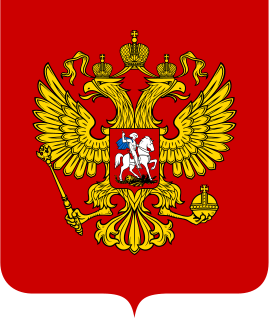
The Judiciary of Russia interprets and applies the law of Russia. It is defined under the Constitution and law with a hierarchical structure with the Constitutional Court and Supreme Court at the apex. The district courts are the primary criminal trial courts, and the regional courts are the primary appellate courts. The judiciary is governed by the All-Russian Congress of Judges and its Council of Judges, and its management is aided by the Judicial Department of the Supreme Court, the Judicial Qualification Collegia, the Ministry of Justice, and the various courts' chairpersons. And although there are many officers of the court, including jurors, the Prosecutor General remains the most powerful component of the Russian judicial system.
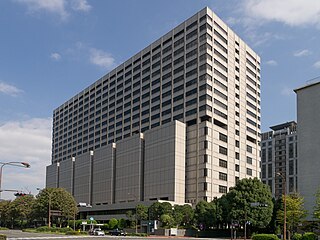
In the judicial system of Japan, the Constitution of Japan guarantees that "all judges shall be independent in the exercise of their conscience and shall be bound only by this constitution and the Laws". They cannot be removed from the bench "unless judicially declared mentally or physically incompetent to perform official duties," and they cannot be disciplined by executive agencies. Supreme Court judges, however, may be removed by a majority of voters in a referendum that occurs at the first general election following the judge's appointment and every ten years thereafter.

The judicial system in Egypt, is an independent branch of the government which includes both secular and religious courts.

The judiciary of Norway is hierarchical with the Supreme Court at the apex. The conciliation boards only hear certain types of civil cases. The district courts are deemed to be the first instance of the Courts of Justice. Jury (high) courts are the second instance, and the Supreme Court is the third instance.
The judicial system of Greece is the country's constitutionally established system of courts.

The supreme court is the highest court within the hierarchy of courts in many legal jurisdictions. Other descriptions for such courts include court of last resort, apex court, and highcourt of appeal. Broadly speaking, the decisions of a supreme court are not subject to further review by any other court. Supreme courts typically function primarily as appellate courts, hearing appeals from decisions of lower trial courts, or from intermediate-level appellate courts.

The Judiciary of Portugal is a system of courts that together constitute one of the four organs of Sovereignty as defined by the Portuguese Constitution. The courts are independent from the other three Portuguese organs of Sovereignty.

The Courts of Peace are the lowest hierarchic level in the judicial system of Peru.
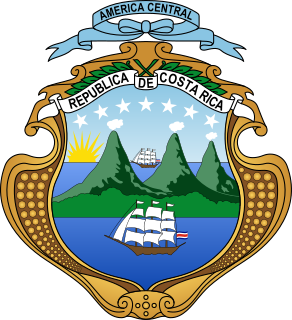
The Supreme Court of Costa Rica is the court of greater hierarchy of Law and Justice in Costa Rica.

The Judiciary of Brazil is the group of public entities in which the Brazilian constitutional attribution of jurisdictional function occurs. It consists of five entities, namely: Supreme Federal Court (STF), Superior Court of Justice (STJ), federal regional courts and federal judges, military courts and judges, and courts and judges of states, the federal district and territories. The STF as well as the higher courts - as well as the Superior Labor Court (TST), the Superior Electoral Court (TSE) and the Superior Military Court (STM) - are based in Brasilia, the Brazil's capital, and have jurisdiction throughout Brazil. Eleven ministers compose the Supreme Federal Court, whose main competence is to keep the constitution. 33 ministers form at least the STJ.

The judiciary in Slovenia is one of the three constitutional branches of government and is independent of the other two. Judges enjoy a permanent mandate and are appointed by the National Assembly after they have been nominated by the Judicial Council, which itself is not part of the judicial branch of the government.
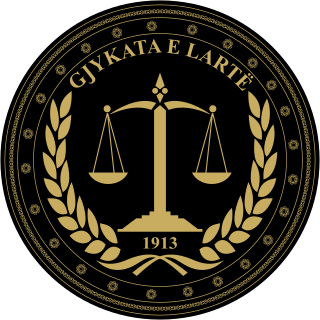
The Supreme Court of the Republic of Albania is the highest court of Albania and is the final court of appeal in the judicial system of Albania. It is composed of seventeen judges, the Chief Justice and sixteen Members.
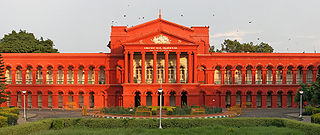
In law, an appeal is the process in which cases are reviewed, where parties request a formal change to an official decision. Appeals function both as a process for error correction as well as a process of clarifying and interpreting law. Although appellate courts have existed for thousands of years, common law countries did not incorporate an affirmative right to appeal into their jurisprudence until the 19th century.
The Judiciary of Sri Lanka are the civil and criminal courts responsible for the administration of justice in Sri Lanka. The Constitution of Sri Lanka defines courts as independent institutions within the traditional framework of checks and balances. They apply Sri Lankan Law which is an amalgam of English common law, Roman-Dutch civil law and Customary Law; and are established under the Judicature Act No 02 of 1978 of the Parliament of Sri Lanka.
The Judiciary of Kosovo is the collection of the central Kosovo institutions that exercises judicial authority in Kosovo. According to the 2008 Constitution of Kosovo, the judicial system is composed of the Supreme Court and subordinate courts, a Constitutional Court, and an independent prosecutorial institution. The courts are administered by the Kosovo Judicial Council.
The law of Cyprus is a legal system which applies within the Republic of Cyprus. Although Cypriot law is extensively codified, it is still heavily based on English common law in the sense that the fundamental principle of precedent applies.
The Judiciary of Albania interprets and applies the law of Albania. Albania's judicial system is a civil law system divided between courts with regular civil and criminal jurisdiction and administrative courts. Albanian law is codified and based on the French law. It is governed by the High Council of Justice (Këshilli i Lartë i Drejtësisë), and its management is aided by the office of the President of Albania, the Ministry of Justice, and the various courts chairpersons.
The Judiciary of Bangladesh or Judicial system of Bangladesh is based on the Constitution and the laws are enacted by the legislature and interpreted by the higher courts. Bangladesh Supreme Court is the highest court of Bangladesh. The jurisdiction of the Supreme Court of Bangladesh has been described in Article 94(1) of the Constitution of Bangladesh. It consists of two divisions, the High Court Division and the Appellate Division. These two divisions of the Supreme Court have separate jurisdictions.
The Judiciary of Armenia interprets and applies the law of Armenia. Under the doctrine of the separation of powers, judiciary exercises judicial power separately from the legislative power of parliament and executive power of the prime minister. As per the Constitution, it is defined with a hierarchical structure regulated by the Supreme Judicial Council of Armenia. On the other hand, The Ministry of Justice of Armenia is a government agency which possesses executive authority and executes policies of the Government of Armenia in sectors that are closely associated with laws and regulations.












